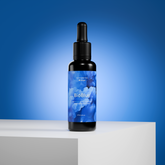Bone & Joint Health
How does RLT help?
For bones:
Red/NIR light appears to stimulate energy production in cells, increase bone factors, enhance blood vessel formation and blood flow to the affected area, modulates inflammation and enhances production of collagen. The net result = stronger bones and more collagen!
For joints:
Red/NIR light can help with joint issues (ie, osteoarthritis) by: decreasing pain, modulating inflammation, improving circulation to the joint and stimulation of healing and cellular repair mechanisms in the joint itself. These are all powerful benefits to maintain or improve joint health!

Tell me more...
For Bones:
Breaks, fractures, and sprains are a fairly common injury in everyday life and even more frequent in athletes. Proper and effective healing is of utmost importance and is also the rate-limiting factor for returning to your normal life; meaning, the faster you can heal (effectively), the quicker you can return to your favorite activities.
Bone tissue has an enormous regenerating capacity, and most of the time it is able to restore its normal architecture and mechanical properties. However, there are limits for this capacity, and complete recovery may not occur if there is deficient blood supply, mechanical instability, or competition with rapidly growing tissues.
Red/NIR light is able to facilitate improved healing and formation of bone by amplifying energy production of bone cells, increasing bone growth factors, improving blood flow to the healing area, reduce inflammation (without disrupting the healing process) and promoting augmented collagen production and deposition. In vitro studies on osteoblastic cells have shown that RLT is able to increase the formation of bone nodules, osteocalcin and osteopontin gene expression, and alkaline phosphatase activity. This appears to exert a bio-stimulatory effect on bone tissue by enhancing osteoblastic proliferation.
For Joints:
Osteoarthritis (OA) is a very common joint disease in the elderly and is associated with significant physical disability.
Although non-steroidal anti-inflammatory drugs (NSAIDs) are widely used to treat the pain and stiffness associated with OA, the high incidence of serious upper gastrointestinal side effect with NSAIDs can limit their use.
Red/NIR light possesses three unique properties that lends itself perfectly to assist in reducing OA pain without the use of NSAIDs: anti-inflammatory, analgesic and reparative. When combined with exercise, these powerful properties of red/NIR light therapy promote a higher level of healing and pain relief when compared to exercise alone. NIR light has sufficient penetration depth to reach the deep inflamed joints, which guarantees the efficacy of phototherapies and desirable therapeutic outcomes.
● ● ●
In conclusion:
By reducing inflammation and normalizing blood circulation to an area, good things happen -- in this case, less pain in the joint and enhanced healing in the bone.
It is worth nothing that the current research on RLT and OA shows that adding RLT to exercise training magnifies the anti-inflammatory effects of RLT and its analgesic effects.
Also, a systematic review and meta-analysis looking at rotator cuff tendinopathy concluded that “adding RLT to an exercise-based treatment program may accelerate improvement of physical function, possibly by keeping the inflammation under control or stimulating tendon repair, with the end result being reduced pain and more rapid improvement.”

What does the research show?
“Within the limitations of this systematic review, bone healing in dentistry was improved with the use of PBM. PBM therapy can promote anti-inflammatory and analgesic effects, improve healing, as well as enhance quality of life related to oral health.” (1)
The results of the literature search showed NIR light-assisted phototherapy exhibited great potential for the precise and controlled treatment of bone-related diseases and bone tissue regeneration.” (2)
"A positive effect of low-level laser (LLLT) energy on bone regeneration within a certain relationship between dose and output power was found. LLLT stimulates cellular metabolism, increasing protein synthesis and subsequent bone regeneration." (3)
"The results of our studies and others indicate that bone irradiated mostly with infrared (IR) wavelengths shows increased osteoblastic proliferation, collagen deposition, and bone neorformation when compared to non-irradiated bone." (4)
"Obtaining pain relief from LLLT might be a good alternative to the use of NSAIDs (for pain relief from OA), particularly for elderly people, because laser therapy has no reported side effects.” (5)
"Our findings suggest that analgesia induced by LLLT in addition to supervised exercise program resulted in more improvements in pain, physical function of older subjects with OA." (6)
**While the current scientific research seems to indicate many positive benefits of RLT in relation to bone and joint pathologies, there is still an appreciable necessity for more extensive research to be conducted in this area, including double-blind RCT (randomized controlled trials), to provide a more comprehensive, robust overview that will further elucidate the optimal parameters and appropriate uses of RLT, which will ultimately lead the most safe and efficacious uses for individuals dealing with bone and joint impairments.
Citations
(1) Lopes, Camila de Carvalho Almança et al. “Effectiveness of Photobiomodulation Therapy on Human Bone Healing in Dentistry: A Systematic Review.” Photobiomodulation, photomedicine, and laser surgery, 10.1089/photob.2021.0092. 6 May. 2022, doi:10.1089/photob.2021.0092
(2) Wan, Zhuqing et al. “NIR light-assisted phototherapies for bone-related diseases and bone tissue regeneration: A systematic review.” Theranostics vol. 10,25 11837-11861. 26 Sep. 2020, doi:10.7150/thno.49784
(3) Zein, Randa & Selting, Wayne & Benedicenti, Stefano. (2017). Effect of Low-Level Laser Therapy on Bone Regeneration During Osseointegration and Bone Graft. Photomedicine and Laser Surgery. 35. 10.1089/pho.2017.4275.
(4) Pinheiro, Antonio & Gerbi, Marleny. (2006). Photoengineering of Bone Repair Processes. Photomedicine and laser surgery. 24.169 78. 10.1089/pho.2006.24.169.
(5) Jang, Ho & Lee, Hyunju. (2012). Meta-Analysis of Pain Relief Effects by Laser Irradiation on Joint Areas. Photomedicine and laser surgery. 30. 405-17. 10.1089/pho.2012.3240.
(6) Shanb, Alsayed. (2016). Effect of Laser Therapy on Chronic Osteoarthritis of the Knee in Older Subjects. Journal of Lasers in Medical Sciences. 10.15171/jlms.







